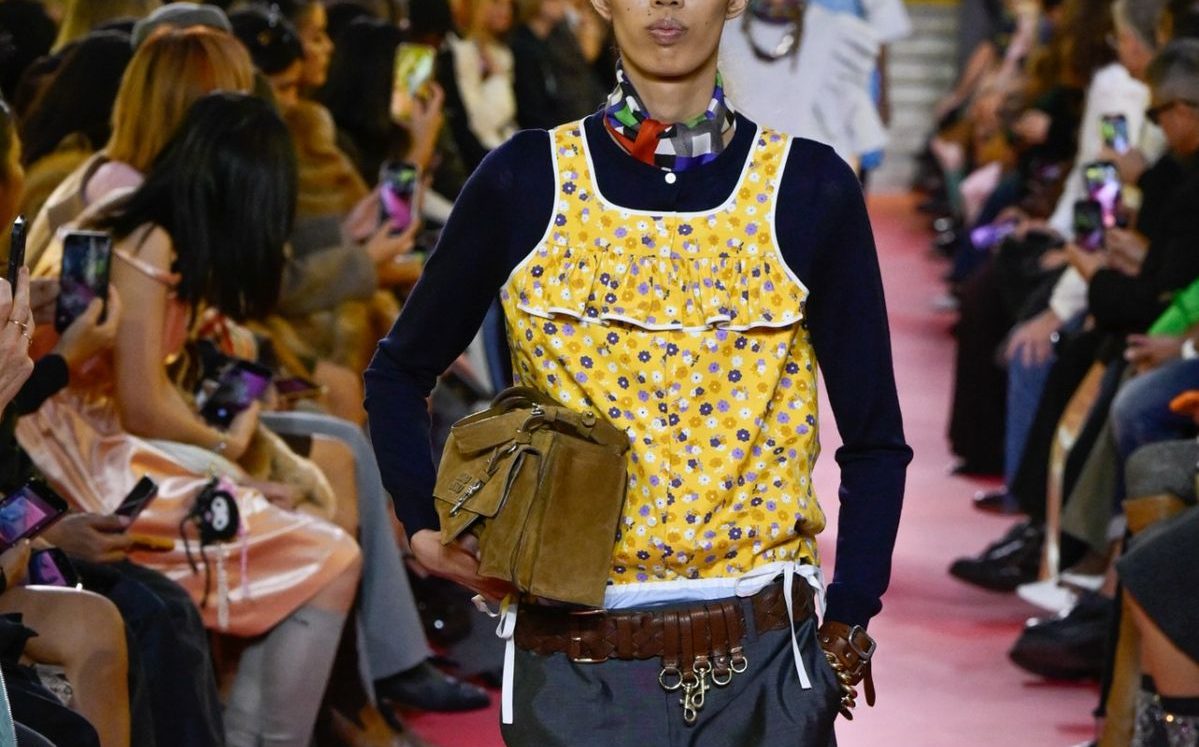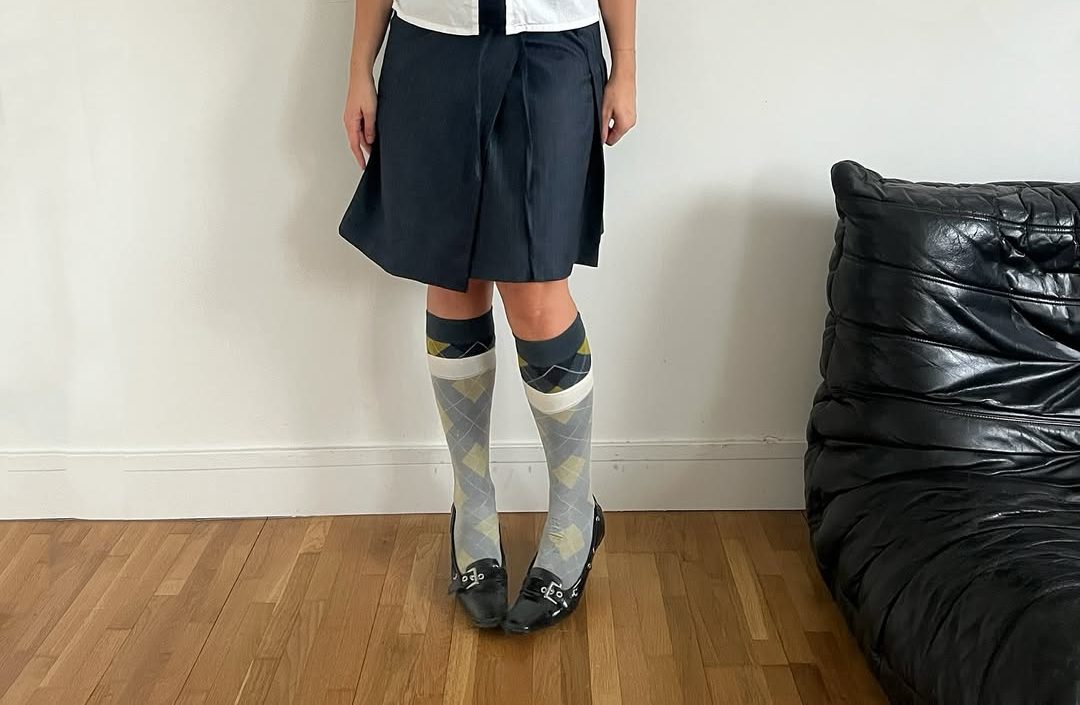Long relegated to kitchens, workshops, and back rooms, the apron and the smock are making their way back onto the runway. Freed from their protective function, these everyday garments rise to the level of political statement. From Miu Miu to Ashley Williams, fashion pays tribute to those who wore them not out of vanity but out of necessity, restoring their place of honor in an era that tends to overlook manual labor.
From home to runway: The return of the utilitarian garment
At Miu Miu, the Spring-Summer 2026 collection opens with actress Sandra Hüller, her silhouette subtly offbeat and her stride confident. Over multiple layers of clothing: a shirt, a jumper, and an oversized jacket, she wears a blue apron with side pockets, the last vestige of a utilitarian wardrobe and a subtle nod to those worn by sailors.
Traditionally associated with culinary and craft professions, from cooks to ceramicists, from cobblers to waiters, the apron is reimagined here, almost sanctified. The Italian house even revisits the metal butcher’s apron, a symbol of protection and resilience, adorning it with colorful embroidery that reveals the skin beneath.
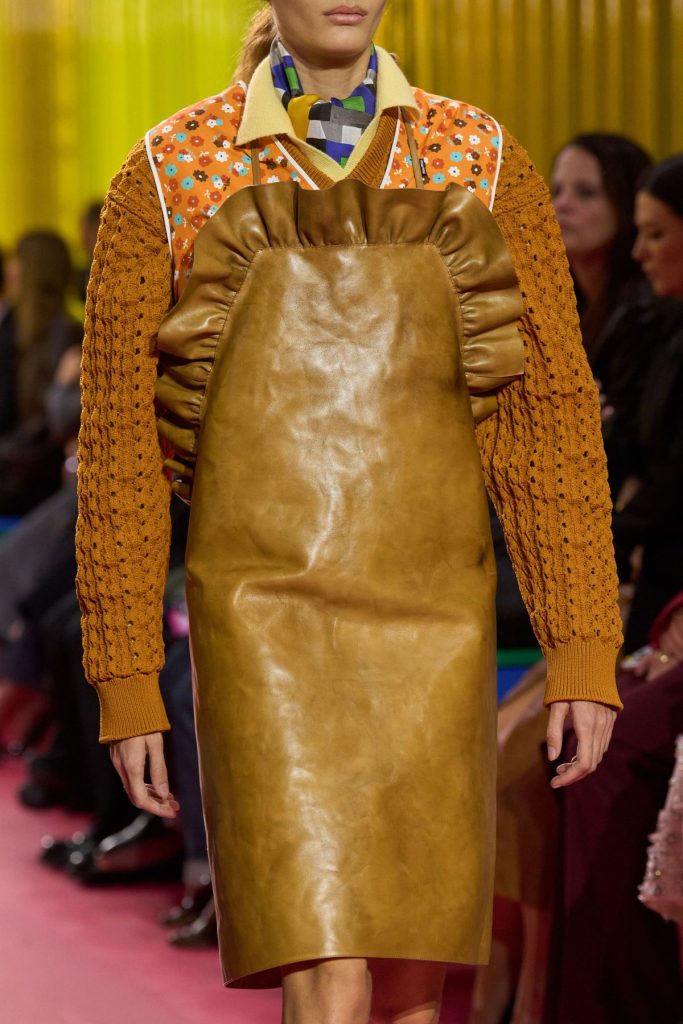
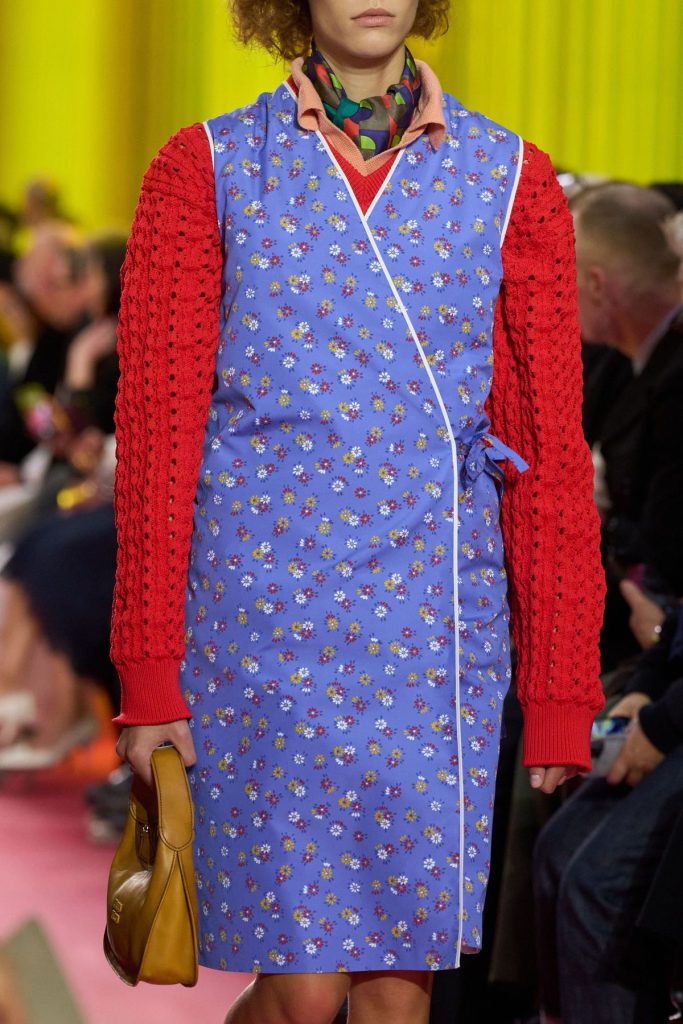
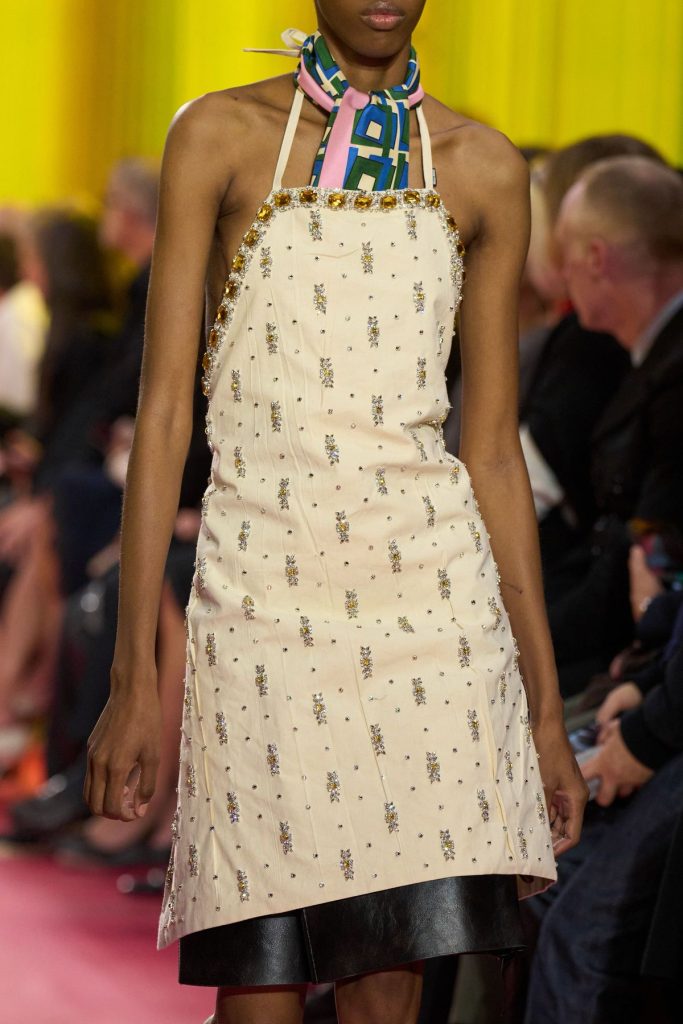
But the reference goes beyond the professional world. At home too, the apron and the smock have long embodied the rhythm of domestic life: the floral smock worn by grandmothers, the black-lace maid’s outfit, or the housewife’s dressing gown. At Miu Miu, these archetypes are turned on their head. The apron no longer protects from stains: it is worn directly against the skin, like a statement tunic.
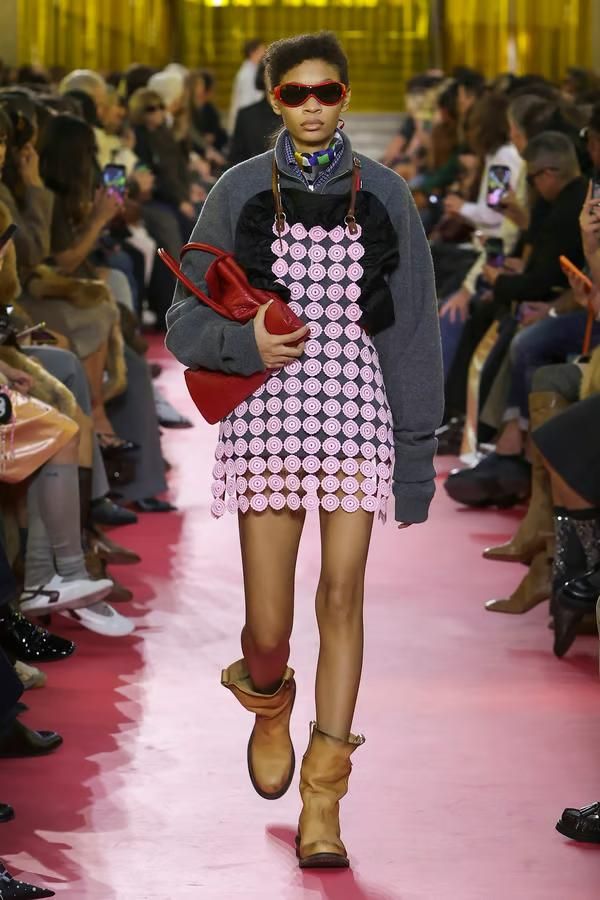
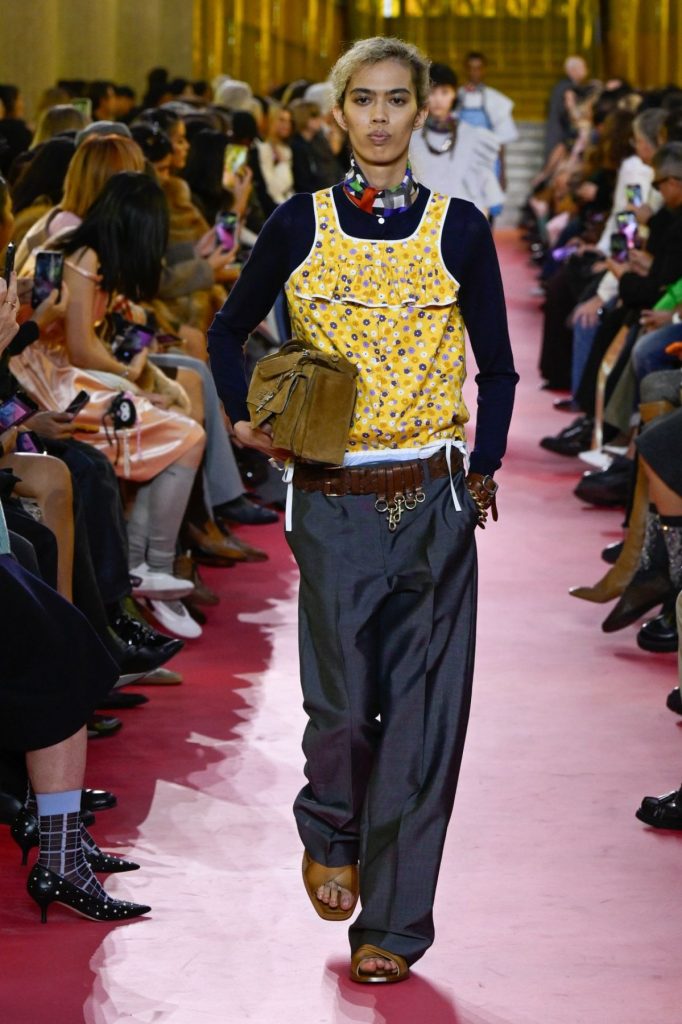

Miuccia Prada, true to her taste for paradox, is not seeking to glorify the housewife, much to the dismay of the Mob Wife trend. On the contrary, she pulls these garments out of the domestic sphere and brings them onto the runway. This gesture, both conceptual and political, pays tribute to the women who wore these clothes out of necessity while asserting a new form of feminine expression. The colorful Formica tables used as seats for the guests complete the parallel between a working-class interior and the aesthetic of the show.
The heavy, sometimes unflattering silhouettes evoke a stylized form of workers’ struggle, recalling the designer’s political sensibility and her history as a former communist activist.
The trend that goes beyond Miu Miu
The return of the apron and the smock is not confined to Miuccia Prada’s vision. Even before Paris Fashion Week, other brands had already brought these utilitarian pieces back into the spotlight. In London, at Ashley Williams, they take on a pop, girly twist, paired with other staples of the elderly woman’s wardrobe, such as orthopedic shoes.

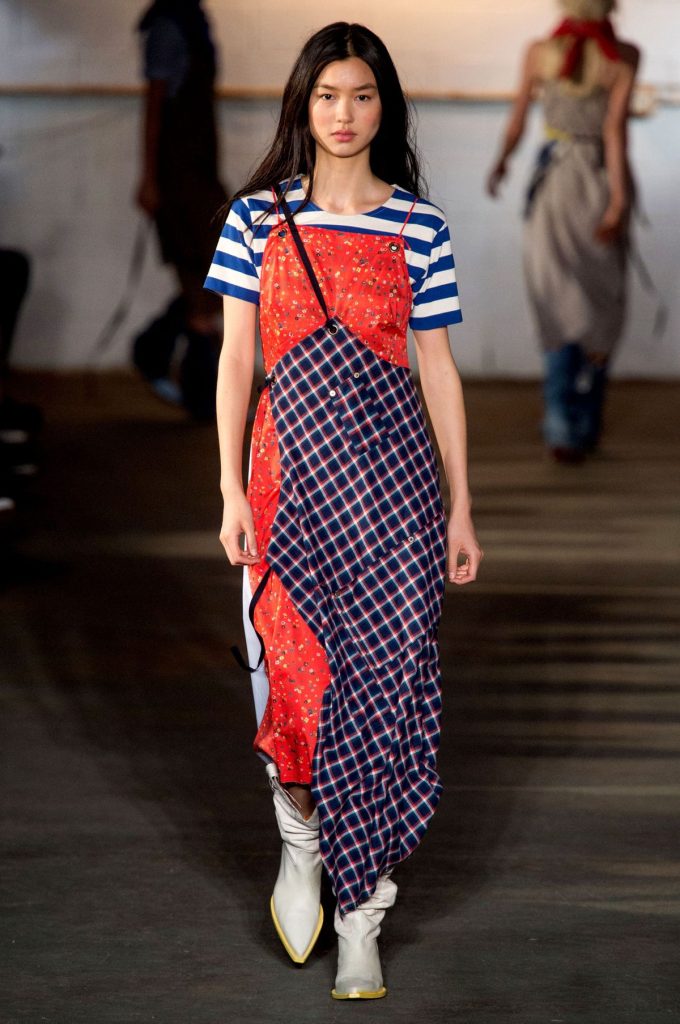
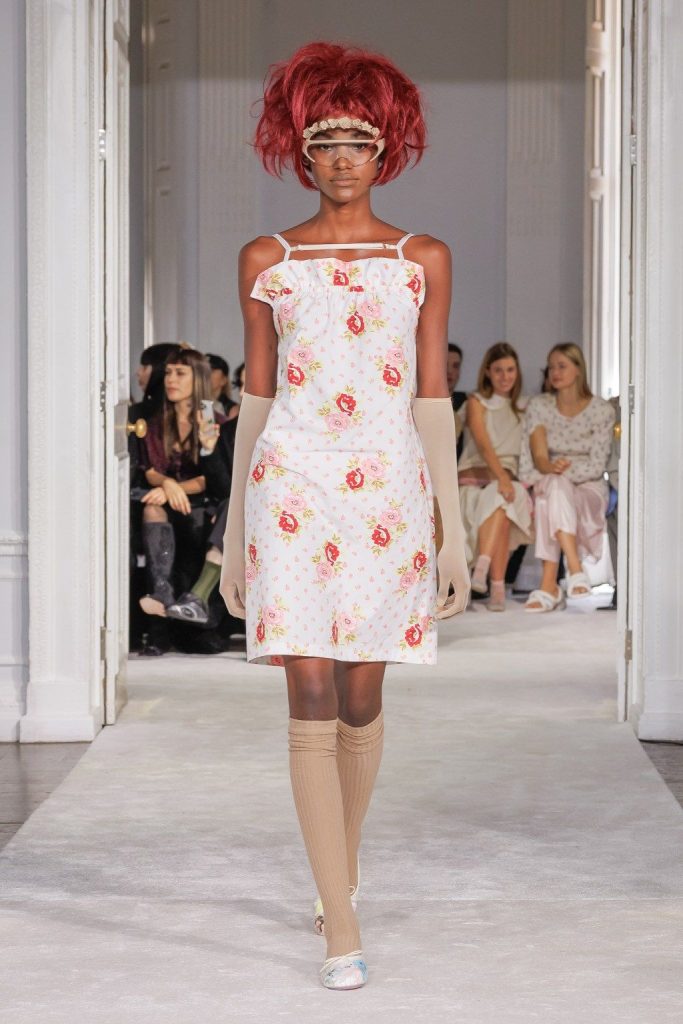
Even before this season, fashion had already embraced the apron: Maison Margiela offered a leather version tied at the waist in 1997; Vetements, in 2016, turned it into an ironic uniform alongside its famous Titanic sweatshirt; R13 (Spring 2018) and Dolce & Gabbana (Autumn–Winter 2020) reworked it in turn, confirming this ongoing fascination with reimagined utilitarian pieces.
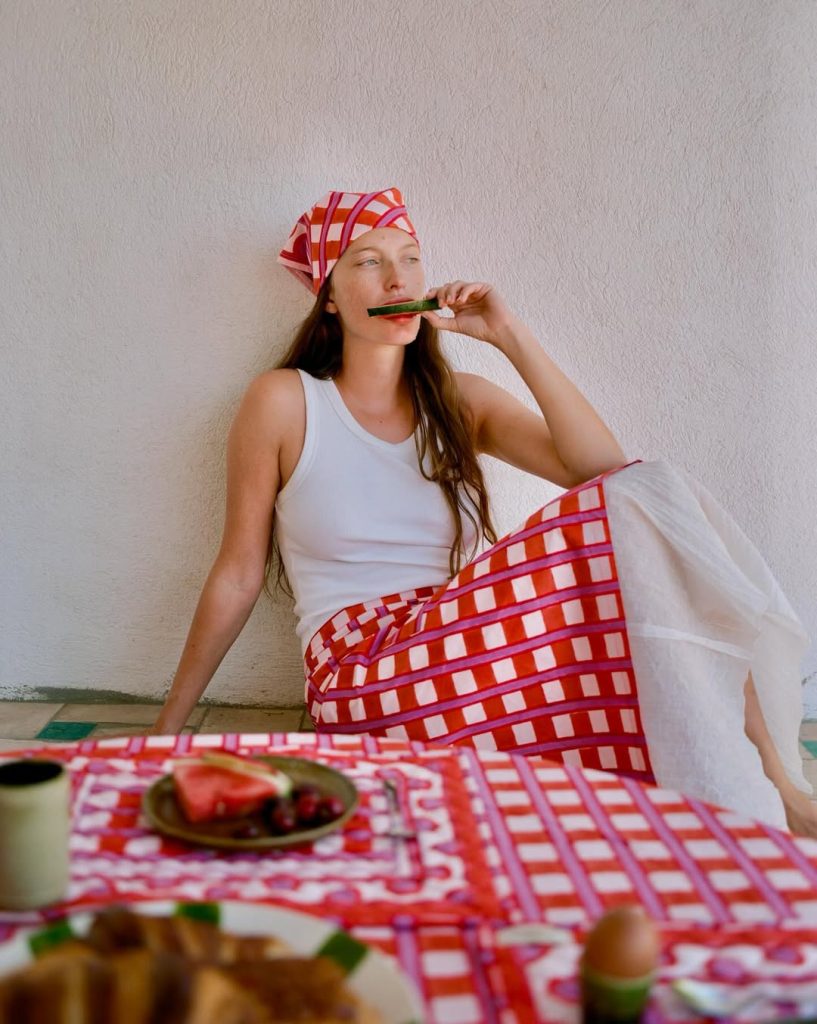


On social media, the trend remains more discreet, though it is steadily gaining ground. It appears mainly through the profiles of creators or artisans who keep their aprons on when photographing themselves. No longer as protection, but as a true marker of identity. This is the case for chef Alice Moireau or Candice Margaux Hauss, founder of Studio Haust, who repurposes one of her tablecloths as an apron — a simple yet symbolically powerful gesture that leaves a lasting impression.
By removing these garments from their original context, designers celebrate the quiet strength of everyday life and give the polished smock and the apron in all its forms a new kind of freedom: the freedom to tell a story, to protect, but also to honor those who wore them before us. Whether worn out of necessity, as a tribute, or simply for its aesthetic appeal, the apron has clearly not said its last word.


